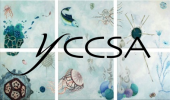© Pint of Science, 2025. All rights reserved.
How can science help us produce sustainable fuel? How can we used advanced microscopy to understand biology? How can we use the vast amounts of digital data collected safely? Hear about how science is both producing and using advanced technology to bring us to the future! A whirlwind tour of all the sciences - from chemistry and physics to biology and statistics!
Data! Data! Data!
Professor Julie Wilson
(Department of Mathematics and York Cross-Disciplinary Centre for Systems Analysis)
We live in a digitised world, but what can we learn from patterns in data? Every day, there are new applications. We can, for example, prevent fraud, predict earthquakes, identify food contaminants, identify cancer cells and distinguish between benign and malignant tumours, but data can also be exploited for less altruistic purposes. When data can influence politics, result in automated decisions that can affect our lives and even allow our identity to be stolen, should we be thrilled or worried about the rapid advances in data analytics and the rise of the machine?
Using electricity to probe and drive fuel production
Dr. Alison Parkin
(Researcher)
Producing fuel is an excellent way to store electricity made from renewable but seasonal energy sources like solar, tidal and wind power. This talk will describe how the Parkin group at the University of York is being inspired by biology to find more efficient and reactive methods for converting water into hydrogen, a carbon-free "clean" fuel. In particular, we are interested in how we can be inspired by bacteria to find ways to achieve hydrogen production without the need for expensive, precious metals like platinum, which are essential in current technology.
Seeing further through the lens of electron cryomicroscopy
Dr. Jamie Blaza
(Lecturer in Cryo-Electron Microscopy)
Microscopes allow us to see further by magnifying an image of reality. Light microscopes are simple and powerful, but the wavelength of light sets limits to what we can see with them. Moving to high voltage electrons removes these limits, but the electrons cause damage to the delicate biological sample as we image it. Recently, new detectors have drastically improved the image quality we can get with low electron doses and we are now in a new era of high-resolution electron cryomicroscopy. I will explain the technique and also give examples of exciting new biological insights we have gained.
Map data © OpenStreetMap contributors.


